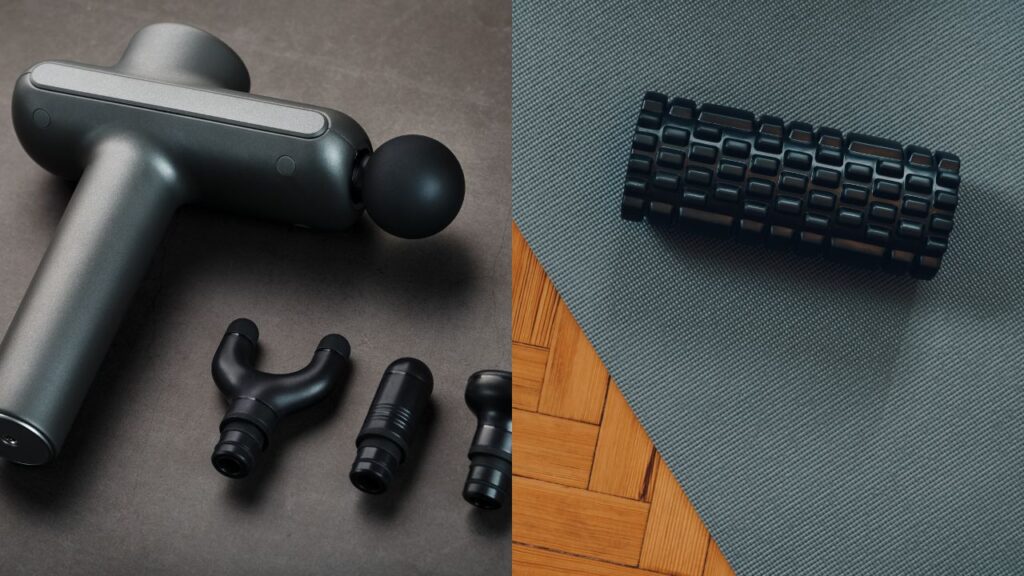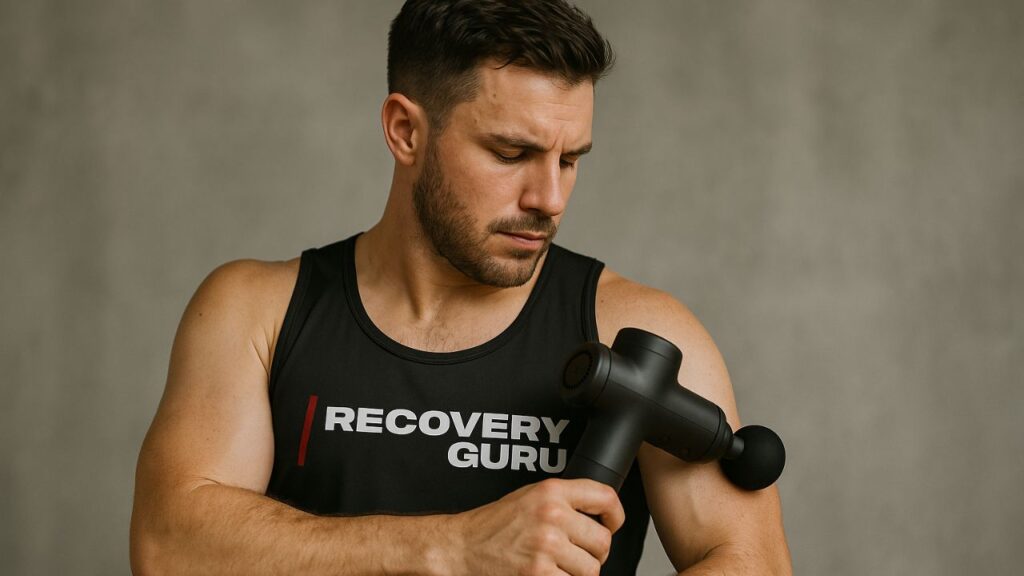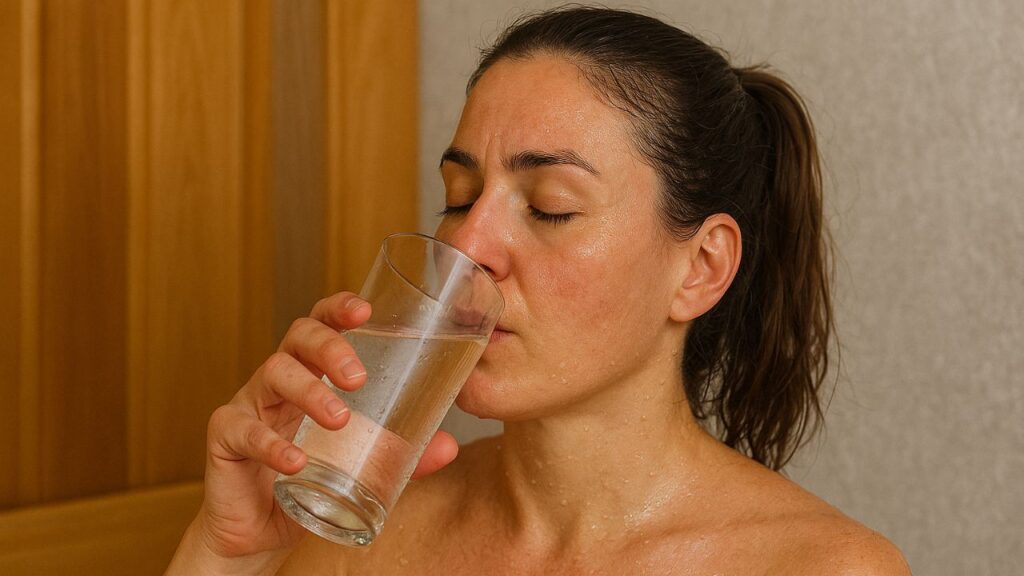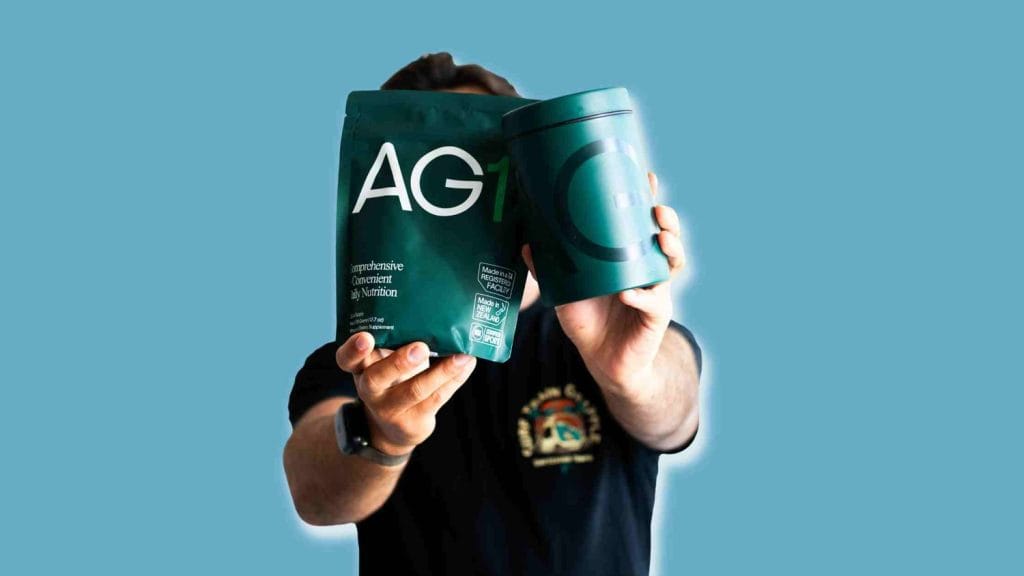Everything You Need To Know About Float Tanks And Sensory Deprivation For Recovery
We include links to products we think are useful for our readers. If you click and buy a product through one of the affiliate links on this page, we may earn a small commission.

Plus, sleep better and experience altered conscious states from float therapy.
Welcome to everything you need to know about float tanks and sensory deprivation for recovery. Floating – it sounds easy. While float therapy sounds like a walk in the park, like most things that offer a massive benefit, they come with a unique challenge. The float tank is a trending wellness and recovery tool that is becoming more and more popular for athletes and high performers as a means of relaxation, stress relief and muscle recovery. Although laying in a warm chamber doing nothing sounds easy, for some, sensory deprivation comes with a solid challenge in a busy world – a busy mind.
A very brief history of the float tank
The float tank has funnily enough been around for about 70 years but has resurfaced and been rebranded to satisfy the growing market of smart people who are looking for ways to look after themselves with alternative therapy and hack their performance and human potential in natural ways.
The first recorded float tank was made in 1954 by Dr. John Lilly who was interested in sensory deprivation and its effect on the brain. The concept has remained largely unchanged with the general modern setup for a float tank being a pod shaped fibreglass or plastic chamber filled with heavily salted water and the ability to block out light and noise pollution. The modern additions include light and sound similar to what we would hear in a guided meditation.
Related Article: The 5 Best Free Meditation Apps That Are A No-Brainer For Beginners. Plus, Bonus App
What we see today is an explosion in the float tank, float therapy space and in fact the wellness and recovery space in general. In your local area we are sure you have noticed them popping up, if not yet, very soon. Europeans have been early adopters of the benefits of float tanks for exercise and neurological benefits for a while, now it is Australia, the US and NZ who are catching on.
Fast forward to today, and there are research labs dedicated to uncovering what ‘floating’ does to the mind and body for recovery from exercise and treatment of mental health concerns like anxiety and depression using fMRI and EEG machines to prove it.
We spend countless dollars every day to treat common mental health conditions, most of which comes in the form of pharmaceuticals. At RG, we are all about shifting the paradigm to using more sustainable and less invasive methods to be well and thrive as humans should. The float tank is one of those methods.
Curios About Floating? You could read: The Float Cure – available on Amazon
The Science Behind Float Therapy and Float Tanks
A float tank is also commonly referred to as an isolation tank or a sensory deprivation tank and is used at the consumer level for muscle recovery and relaxation but is also studied at the scientific/medical level in the field of restricted environmental stimulation therapy (REST). As we mentioned earlier, the scientific exploration of float dates back over 60 years and the pioneer also took a dive into the use of hallucinogens and psychedelics in the name of mind exploration.
The most notable study to date on the benefits of sensory deprivation or REST involves a group of 65 participants who “were randomized to either a wait-list control group or a flotation tank treatment group where they participated in a seven weeks flotation program with a total of twelve flotation sessions.” The subsequent questionnaires for psychological and physiological effects of float therapy indicated positive results.
The float therapy participants experienced “significant reductions in perceived stress, anxiety, depression and ‘worst pain’, while experiencing improved sleep quality, increased optimism, improved day-to-day mindfulness and also altered conscious states.
Why? The mechanisms behind the positive benefits experienced across a broad range of conditions are largely unclear. However, the relaxation response (RR) could also be to thank, steering the body away from the “fight or flight” response. The RR is such an effective remedy to stress symptoms “due to the direct link with parasympathetic nervous system activity where it lowers the heart rate and blood pressure as well as reducing respiratory frequency.”
One would assume that once you progress past the initial feelings of uncertainty and the oddity of floating around atop salty water without any light, sounds, sight and touch, the reason for the positive attribution to floating would be the quieting of the mind, a deeper awareness, a clear space and the ability to fully relax into space and switch off. It is worth noting that such experiences like this may not have been remotely experienced by the floater since being in the womb!
How Long Should You Spend In A Float Tank?
Float tank therapy sessions generally last around 45-90minutes.
This can seem like an eternity for a busy mind. Make no mistakes, float tanks are a challenging experience and you will find they may take some getting used to. In our experience, the first 20-30 minutes of a float are the hardest. With the mind still racing and the body trying to relax into the rather strange feeling of motionlessness, weightlessness and lack of senses, it may be one of the most unique feelings you have experienced.
This is perhaps the reason why participants have described altered conscious states. In fact, some die hard biohackers have been experimenting with hallucinogens and psychedelic use in conjunction with sensory deprivation. One has even written a book about such experimentation: The True Light of Darkness, by James Jesso.
In terms of temperature, long timeframes in the float tank aren’t really an issue as the average float tank water and air temperature is usually calibrated to sit at about the same as body temperature which is 37 degrees C (95F).
In our experience, this is yet another pleasant but odd sensation of the float tank, being that it is difficult to feel where the skin stops and the water starts when the eyes are closed because there is minimal sensory feedback from a difference in temperature. This really heightens the sensation of weightlessness.
Float Therapy For Relaxation and Exercise Recovery For Athletes
Floating or REST sessions have shown benefits for athletic performance. Multiple studies have shown positive effects for athletes in both psychological recovery and physiological recovery factors.
Psychologically, athletes have reported that napping in combination with REST sessions is an effective “relaxation technique when recovering from the psychophysiological demands of training and competition”.

Not only that, in another study involving archery athletes, 45 minutes of float tank therapy or REST showed an improvement in performance consistency (they shot better), lower muscle tension and less perceived exertion. Floating has also been shown to reduce blood lactate levels in athletes post exercise, which is a game-changer for speeding up recovery time and getting back to training as fast as possible.
So yes, athletes should float.
Float Therapy For Anxiety, Depression, Stress and Pain Relief
Float therapy tanks have shown in multiple studies, like this one, that a substantial improvement in mood characterised by increases in serenity, relaxation, happiness, positive affect, overall well-being, energy levels, and feeling refreshed, content and peaceful. This is substantially important and widely beneficial information considering anxiety and depression disorders are the most common mental health conditions and the societal and financial cost of such conditions is enormous.
Despite how common these conditions are, they remain largely untreated, and float therapy could be of huge benefit to the portion of the population suffering from anxiety and depression. This is the first Floatation-REST trial in individuals affected by anxiety and depression, with results showing clear signs of short-term benefit in PTSD, Generalized Anxiety Disorder, Panic Disorder, Agoraphobia, Social Anxiety Disorder, and Major Depression.
Not only that,clinical research in float therapy has also shown beneficial effects across a range of different stress-related conditions, including: hypertension, chronic tension headaches, and chronic muscle tension pain in the back and neck.
Float Therapy For Memory, Creativity and Problem Solving

Although studies are limited on creativity and float therapy, one study showed floating may have an association with creativity benefits as a result of a decrease in anxiety, tension, depression and fatigue which is speculated to allow the subjects to direct increased energy and attention toward creative thinking.
In this study, participants who underwent float therapy reported experiencing significant reductions in anxiety, tension, depression, and fatigue following their sessions. These emotional and mental improvements are believed to create a conducive environment for enhanced creative thinking. With decreased negative emotions and a clearer, more relaxed state of mind, individuals may find it easier to channel their energy and attention towards creative pursuits.
The relaxation induced by float therapy can create a mental space that is conducive to divergent thinking, problem-solving, and idea generation—key components of the creative process. By alleviating stress and promoting a sense of calmness, float therapy may help individuals tap into their creative potential more effectively.
While more research is needed to fully understand the mechanisms underlying the relationship between float therapy and creativity, these initial findings suggest that float therapy could be a promising tool for enhancing creative thinking and innovation. As interest in alternative therapies for mental well-being continues to grow, float therapy stands out as a potential avenue for unlocking creativity and fostering personal growth.
Float Therapy During Pregnancy

Based on the research, float therapy is suitable and recommended during pregnancy. It is well known that during the 2nd and 3rd trimesters of pregnancy movement, sleep, pain, headaches can all be commonly experienced.
Float therapy can be an effective measure against those pregnancy related issues noting that the science on the physiological effects of floating include increased dopamine and endorphin release, calming effects, relaxation, weightlessness to relieve heaviness, reducing the perceived pain of aching joints and muscles, reduction of swelling and lowering blood pressure.
Best Float Tanks For Home Recovery 2021
Float therapy can become an expensive recovery tool when you are chalking up regular visits to a wellness centre at roughly $40-$100 per float session. Although the increase in competition among more and more gyms and wellness centres offering the service, the price tag can be a little too high for some. We have come across one home float tank option that is a bit of a no-brainer – The Zen Float Tank. They work out to be miniscule in price compared to the $10000-$30000 commercial variants and can be placed in an appropriate spot at home, not taking up too much space.
By investing in a home float tank like The Zen Float Tank, individuals can enjoy the convenience and privacy of float therapy without breaking the bank. Whether you’re looking to enhance your recovery routine, reduce stress, or simply unwind after a long day, a home float tank offers a practical and cost-effective solution for achieving your wellness goals.
Are There Any Negative Effects of Floating?
Besides the mental challenge of literally laying in the supine position and doing nothing, essentially meditating for up to 90 minutes, there are only two other negative things to say floating.
Firstly, we all noticed some degree of neck back due to the weight of the head causing it to sit a little low in the water in relation to the rest of the body. After about 20 minutes the small circular neck floaty needed adjusting to reposition the head of a kinked position. This could be alleviated by placing a thicker section of a pool noodle under the neck or head like we ended up doing.
Secondly, at all costs, avoid getting the salty water in your eyes and cuts on the body. Once it’s in your eyes, it will take a long time for the sting to go away and definitely don’t try to rub your eyes with your fingers after they’ve also been submerged in the salt, big mistake. The 10’s of kilograms of epsom salts that are dissolved in the water of a float tank are superb for muscle relaxation and providing a dense water to float on, but not so fun for the eyes and cuts. Ouchy!
Conclusion On Float Tanks
You can see that the floating, float tanks or REST (whichever you would like to call it), has the potential to be extremely beneficial, even life changing, across a broad range of recovery facets. We recommend at least 4-5 float sessions to get started and really notice some of the deeper benefits to floating on consciousness, stress reduction, pain, happiness and general well-being.
In our eyes, float tanks are a safe practice, but it is important to understand and be aware of how they may affect you individually.
Happy floating!
Smarter recovery for humans…

Infraredi Slim Lite vs Flex Mini: Which is Better?

Infraredi Slim Lite vs Flex Mini: Which is Better?

Infraredi Slim Lite vs Flex Mini: Which is Better?

Infraredi Slim Lite vs Flex Mini: Which is Better?

Infraredi Slim Lite vs Flex Mini: Which is Better?

Infraredi Slim Lite vs Flex Mini: Which is Better?

Infraredi Slim Lite vs Flex Mini: Which is Better?

Infraredi Slim Lite vs Flex Mini: Which is Better?

Infraredi Slim Lite vs Flex Mini: Which is Better?

Infraredi Slim Lite vs Flex Mini: Which is Better?

Infraredi Slim Lite vs Flex Mini: Which is Better?

Infraredi Slim Lite vs Flex Mini: Which is Better?

Infraredi Slim Lite vs Flex Mini: Which is Better?

Infraredi Slim Lite vs Flex Mini: Which is Better?

Infraredi Slim Lite vs Flex Mini: Which is Better?

Infraredi Slim Lite vs Flex Mini: Which is Better?

Infraredi Slim Lite vs Flex Mini: Which is Better?

Infraredi Slim Lite vs Flex Mini: Which is Better?

Infraredi Slim Lite vs Flex Mini: Which is Better?

Infraredi Slim Lite vs Flex Mini: Which is Better?

Infraredi Slim Lite vs Flex Mini: Which is Better?

Infraredi Slim Lite vs Flex Mini: Which is Better?

Infraredi Slim Lite vs Flex Mini: Which is Better?

Infraredi Slim Lite vs Flex Mini: Which is Better?

Infraredi Slim Lite vs Flex Mini: Which is Better?

Infraredi Slim Lite vs Flex Mini: Which is Better?

Infraredi Slim Lite vs Flex Mini: Which is Better?

Infraredi Slim Lite vs Flex Mini: Which is Better?

Infraredi Slim Lite vs Flex Mini: Which is Better?

